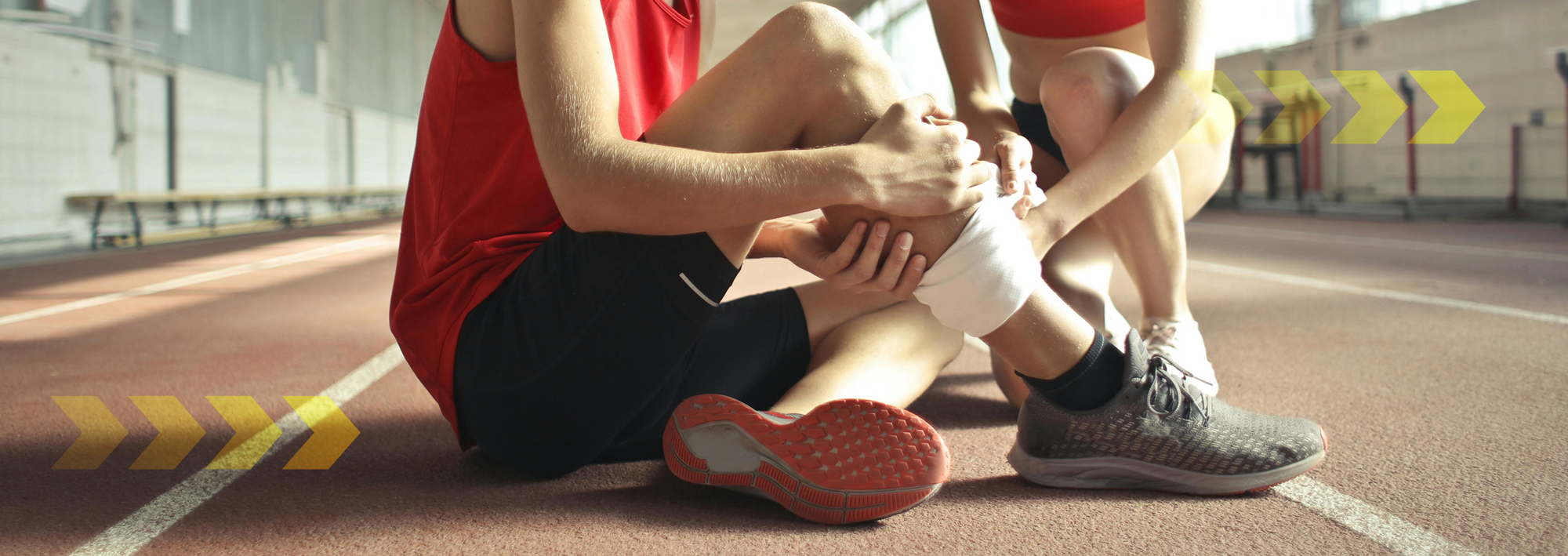Everything you think you know about cramps is probably wrong.
Contrary to popular belief, cramps are actually not cause by dehydration and electrolytes.
Today, we’ll be breaking down what REALLY causes cramps and how to prevent them from ruining your next marathon.

The Truth About Cramps
Science says dehydration and electrolytes aren't the main villains behind your muscle cramps.
A shocking study of ultramarathon runners found:
- Cramping runners were MORE hydrated
- Electrolyte levels were the same in crampers and non-crampers
- The real culprit turns out to be muscle fatigue and damage
What Actually Causes Marathon Cramps?
Muscle fatigue and damage are your biggest enemies.
Research shows cramping runners:
- Had more muscle damage before racing
- Trained twice as much in the final 3 days
- Started 13 minutes too fast
If you recall your past races, you’ll notice that cramps usually strike in the last 10km of the marathon when fatigue peaks. That’s your body's way of trying to shut down the muscle to protect it from more damage.
Heat Makes Everything Worse
While dehydration alone probably won't cause cramps, heat can:
- Speed up fatigue
- Increase muscle damage
- Make your body work harder
The key? Reduce physical and mental fatigue.

Here are 6 ways that marathon cramps can be prevented.
1) Train For Race Demands
- Build mileage and speed gradually
- Include marathon-pace runs (especially close to race)
- Practice in race conditions (heat, hills, fueling)
- Don't overtrain before race day
Remember, it is critical to include marathon pace intervals in your Long Runs, that make up 70% of your long runs, as you get closer to your race day.
2) Get the Taper Right
- Travel early to adjust to time zones
- Cut volume but keep intensity:
- 2 weeks out: 60-70% normal volume
- 1 week out: 40-50%
- Run the same number of days per week or reduce by 1-2 days
- Keep marathon-pace work
Bonus tips for the taper:
- Sleep more
- Travel Early
- Reduce life stress
- Trust the process
3) Pacing Your Marathon
- Begin slightly below your goal pace
- Build speed based on feel, heart rate, and breathing
- Break your race into blocks:
- Km 1 to 21: 5-10 seconds below goal pace
- Km 21 to 32: Goal pace if feeling good
- Km 32 to 42: Push the pace
4) Prepare for the Heat
In a country like Singapore, the heat and humidity is a major factor that can ruin your race. Here are some things you can do to get the better of the heat:
Before Race Day:
Train your body to handle heat (heat acclimatization):
- Early Phase (>8 Weeks Out):
- 10 days of heat exposure
- Use active methods (exercise in heat) or passive methods (hot water immersion, sauna)
- Pre-Race (8–2 Weeks Out):
- 2–3 heat exposures per week
- Combine active and passive methods to maintain and build adaptations
- Final Phase (2 Weeks to Race Day):
- 1–2 passive heat exposures per week
- Focus on sustaining adaptations without adding stress during taper
Race Morning:
- Pre-cool with an ice slushy drink or cold towel 30 minutes before starting
During Race:
- Drink cold fluids throughout as tolerated
- Splash cold water on your neck
- Slow down 15-30 seconds per Km based on heat
5) Build Strength
Strong muscles = less fatigue and damage.
Here's what you can do to get stronger
- 2 weekly strength sessions
- Heavy weights (80% max) for 3-8 reps and Plyometrics
- Key exercises: Squats, Deadlifts, Single-leg exercises, Calf raises
Be sure to skip strength sessions on your interval and long run days
Here are some key exercises that should be included in your strength days:
- Double Leg Pogos: 2-3 sets of 10 reps
- Goblet Split Suqats - 3 sets of 5 reps per leg
- Hop & Stick - 3 sets of 3 reps per leg
- Single Leg Press - 3 sets of 4 reps per leg
- Single Leg Weighted Calf Raise - 2 sets of 8 reps per leg
Always choose weights that are abou 2-3 reps in reserve. Going too heavy on lifts or increasing to too many reps will break down your muscle tissues to the point where it will be difficult to recover before your next run.
6) Fueling up on Carbs
Your muscles need fuel (carbs) to prevent cramps!
Studies show that low glycogen increases muscle damage and fatigue, which can cause more cramps.
Here’s how you can keep carb levels high to fuel your muscles:
Pre-Race Carb Loading:
- 8-12g carbs per kg bodyweight for 1-2 days before
Pre-Race Meal
- 2-4 grams of carbs per kilogram of body weight 2-4 hours before the race
- Aim for a 2:1 glucose-to-fructose carb ratio
- Example: 67g glucose + 33g fructose for 100g total carbs
Race Day Strategy:
- 60-90g carbs per hour
- Start at Km 1
- Mix glucose/fructose sources
- Practice in training
It is also important to have a strategy about which gels you’re going to take at which point in the race.
For an in-depth guide on how to fuel for race day, click here

Conclusion
Cramps are mainly caused by fatigue and muscle damage, not dehydration
To Prevent Cramps:
- Train Smart
- Include marathon-specific runs
- Increase intensity as race approaches
- Do 2 strength sessions per week
- Nail Your Taper
- Cut volume 2 weeks before race
- Keep some intensity
- Prioritize sleep and recovery
- Carb Load 1-2 days before your race
- Race Strategy
- Start below goal pace
- Build speed based on feel
- Fuel with 60-90g carbs per hour
- Start fueling at km 1!
References
1. Schwellnus, M. P., Nicol, J., et al. “Evidence for muscle damage and fatigue as primary causes of exercise-associated muscle cramps (EAMC).” British Journal of Sports Medicine, 2009.
2. Hoffman, M. D., & Stuempfle, K. J. “Muscle damage and exercise-associated cramps in ultramarathon runners.” Sports Medicine Open, 2016.
3. Shang, G., Collins, M., & Schwellnus, M. P. “Factors associated with self-reported exercise-associated muscle cramps in endurance athletes.” Clinical Journal of Sport Medicine, 2011.
4. Morton, D., & Callister, R. “Exercise-Related Transient Abdominal Pain: Theories and prevention.” Sports Medicine, 2014.
5. Braulick, K., Miller, K. C., et al. “Hydration status, electrolyte concentration, and exercise-associated muscle cramps.” British Journal of Sports Medicine, 2013.
6. “What Causes Muscle Cramps and How to Prevent Them.” Run to the Finish, 2023.
7. Schwellnus, M. P., Swanevelder, S., Jordaan, E., et al. “Underlying chronic disease, medications, and history of injuries as risk factors for EAMC.” Clinical Journal of Sport Medicine, 2018.
8. Rosner, Jonah. “6-Step Guide to Stop Cramps.” Marathon Science Newsletter, 2024.



